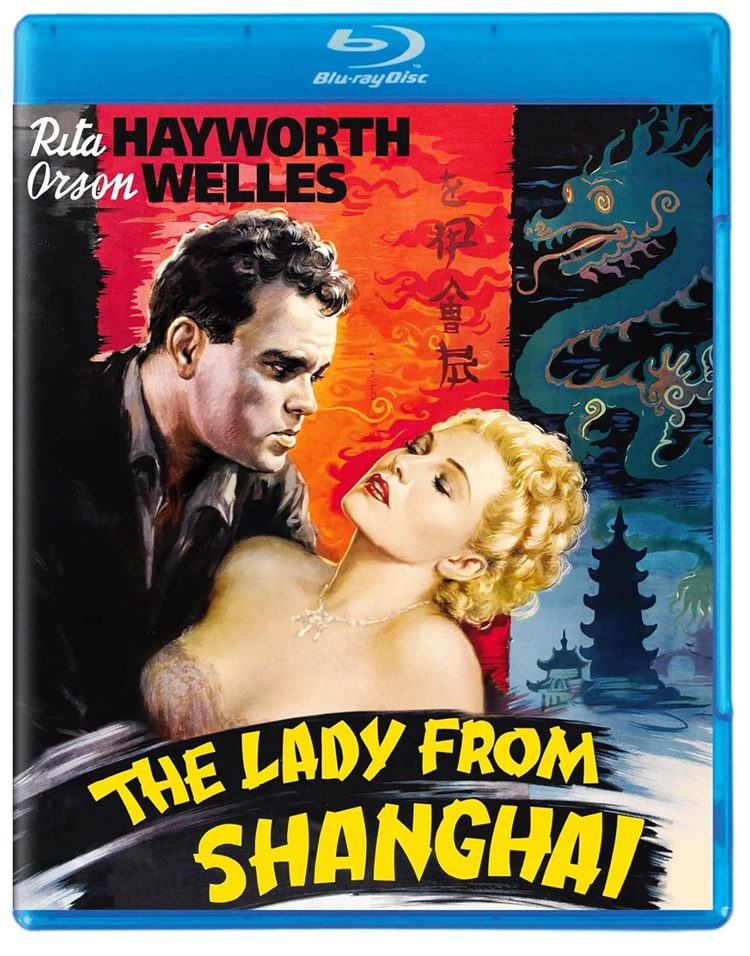
Irish sailor Michael O’Hara (Orson Welles, who also wrote, directed, and produced) is the film’s narrator and he tells the viewer that when he first saw Elsa (Rita Hayworth), the titular character, riding in a New York City carriage, he “was not in [his] right mind, for quite some time.” Being lovestruck, admitting “from that moment on [he] did not use [his] head very much” might explain how he misses clues and falls in with a group of characters who crisscross him and each other.
Later, Michael rescues Elsa from three young fellas who dragged her into a park. He notes they are not professional criminals, yet he isn’t suspicious that she dropped her handbag, with a gun it in, for him to find. Once he learns she is married, he rebuffs her offer to work on their yacht. However, Elsa’s husband, famed criminal defense attorney Arthur Bannister (Everett Sloane), comes around the next day looking to hire him. Michael joins the trip to San Francisco.
Death is in the air. There are whispers of a plot to kill Arthur that Arthur is aware of. Elsa confesses suicidal thoughts to Michael. Arthur’s partner, George Grisby (Glenn Anders), is unhappily married and concerned about atomic bombs dropping. He offers Michael $5,000 to “murder” him, but what George really wants is Michael confessing to his murder so George can fake his death and disappear. With no body, George tells Michael he can’t be convicted. The money sounds good to Michael because he could use it to run off with Elsa to get away from her controlling husband. Seems simple enough, but George isn’t the only one with a plan, as an unintended murder throws a wrench into the works.
The video has been given a 1080p/AVC MPEG-4 encoded transfer displayed at an aspect ratio of 1.37:1. Cinematographer Charles Lawton Jr.’s shadowy compositions come through with inky blacks and when combined with the rich spectrum of grays, a strong contrast is created. The image has noticeable film grain and fine texture details seen in the costumes and other objects. The focus is frequently sharp but sometimes appears soft due to the source.
The audio is available in DTS-HD Master Audio 2.0 mono. Dialogue is clear. Composer Heinz Roemheld’s score stretches the dynamic range and captures the ethnic music of different locales. There’s no hiss nor signs of age or defect.
The special features are:
- Three commentary tracks by film historian Imogen Sara Smith, critic Tim Lucas, and filmmaker Peter Bogdanovich, respectively
- A Conversation with Peter Bogdanovich (21 min) – From 2000, Bogdanovich talks about Welles’s history including conversations they had about Lady.
- Comments by Eddie Muller: Epic Noir Poem (3 min), Back Story (13 min), It’s Film Noir Distilled (5 min) – Muller sits for one interview that is cut into three segments.
- Trailers for The Lady from Shanghai, The Stranger, Touch of Evil, Man in the Shadow, Separate Tables.
Based on Raymond Sherwood’s novel If I Die Before I Wake, and in spite of studio interference, The Lady from Shanghai is an engaging film noir reminiscent of Howard Hawks’ The Big Sleep. There are compelling characters, brought to life by the talented cast, and compelling scenes, especially the iconic climatic Hall of Mirrors sequence with its photographic trickery, but how the mystery is solved is a bit of a mystery. However, it’s not clear if the confusion is the doing of Welles, or more likely that of Columbia Pictures president Harry Cohn who ordered reshoots by Welles and edits without him that cut away about an hour. The KL Studio Classic Blu-ray showcases the visuals and offers a good amount of special features that tell of The Lady‘s making, although a number of the stories get repeated.